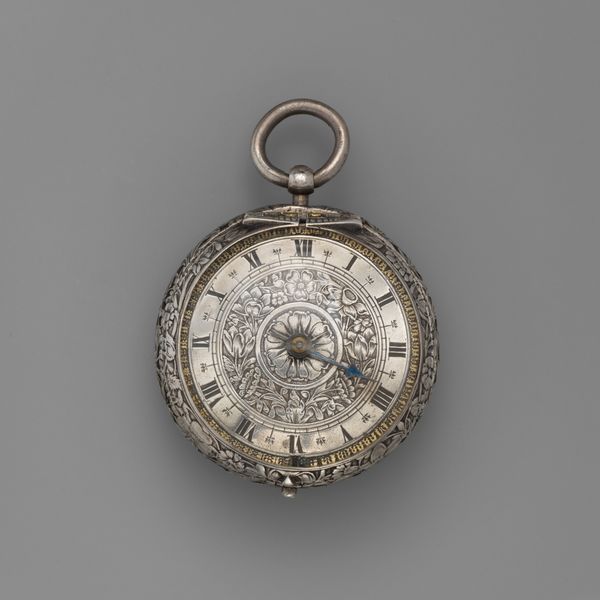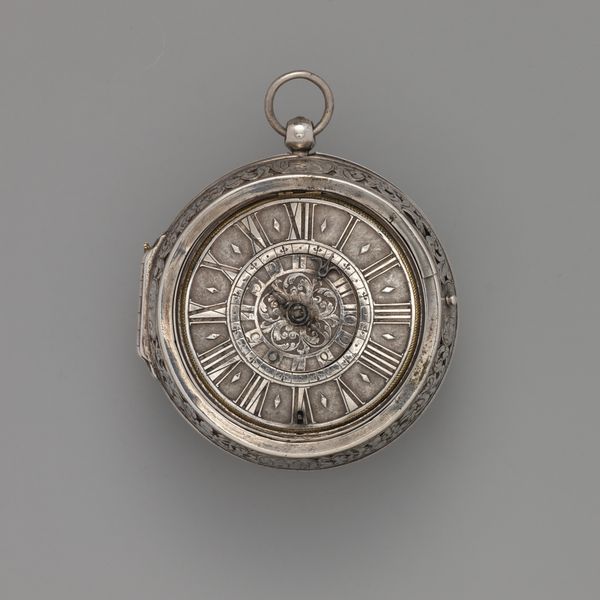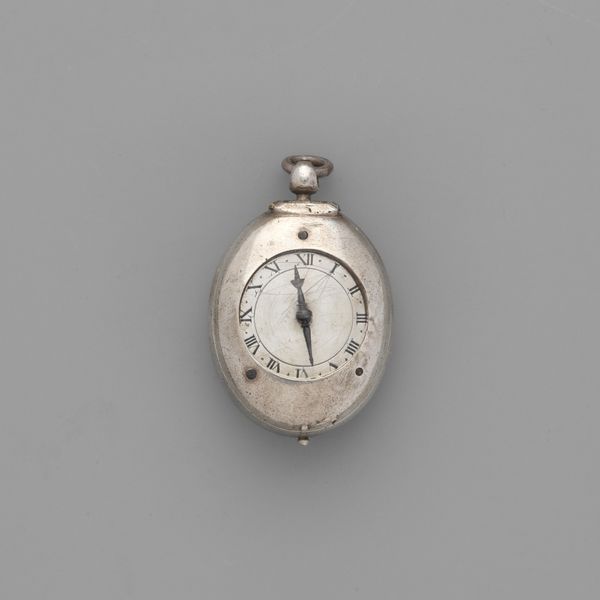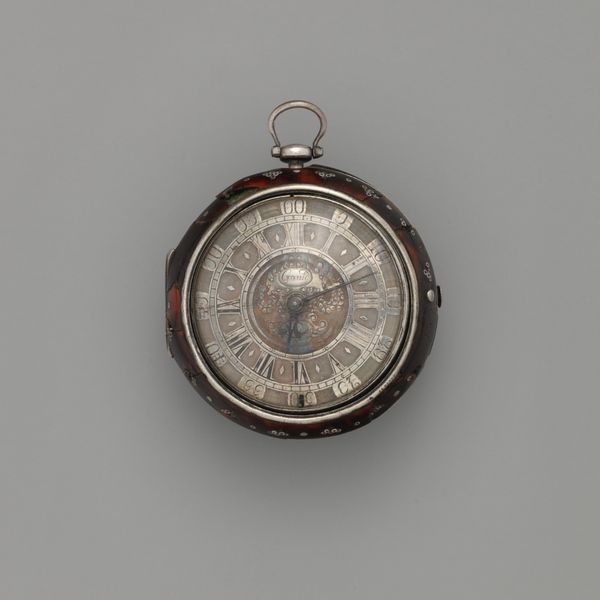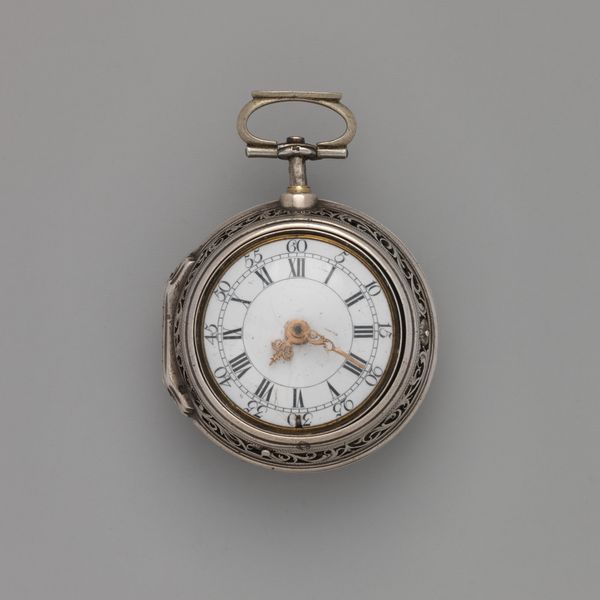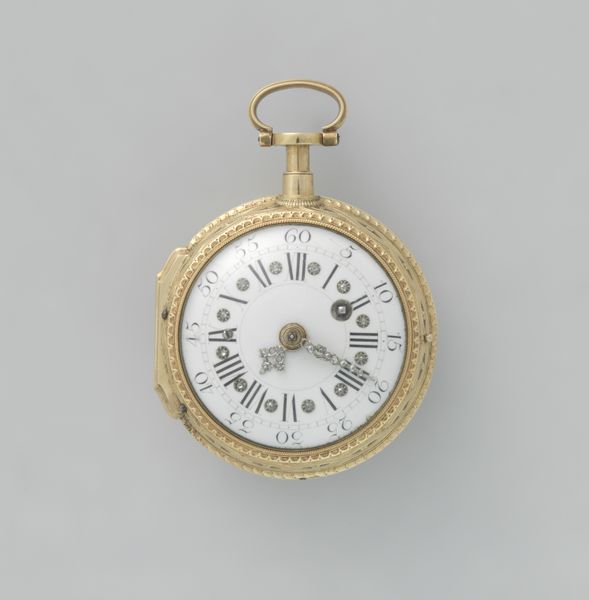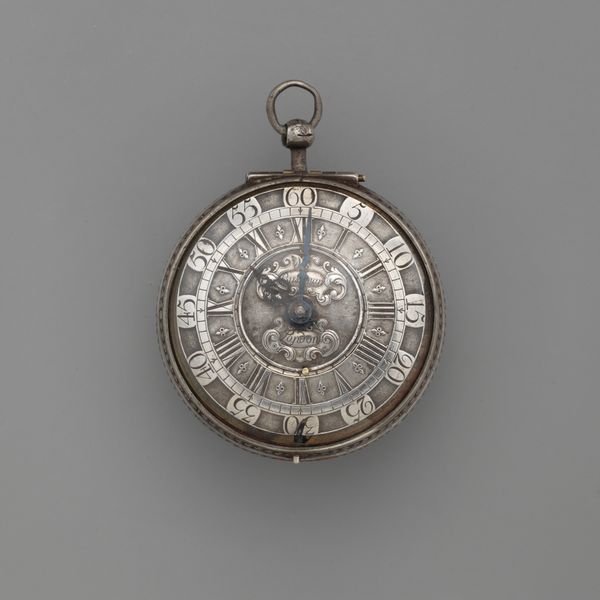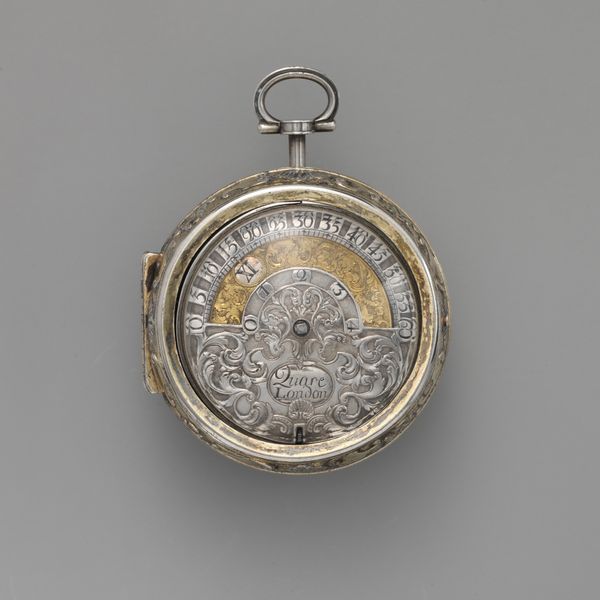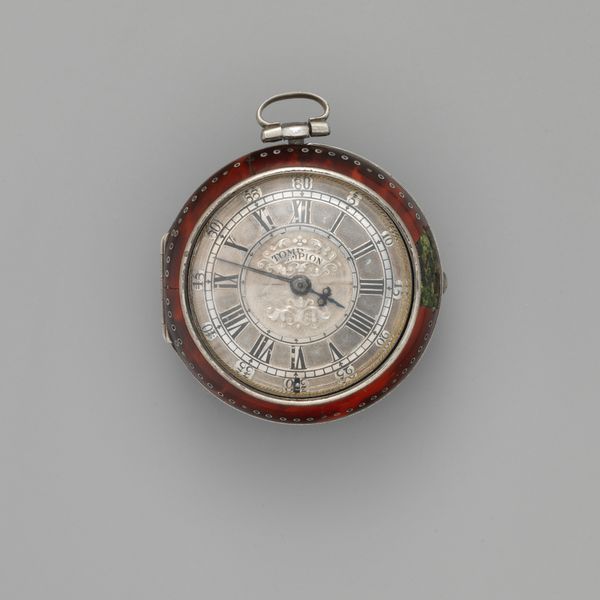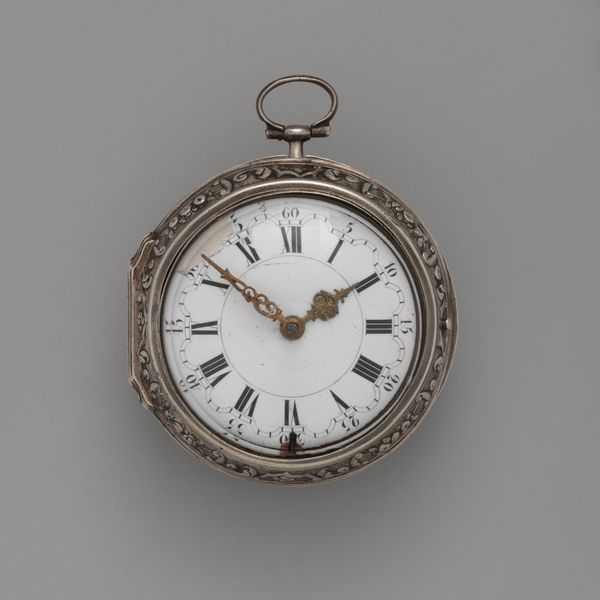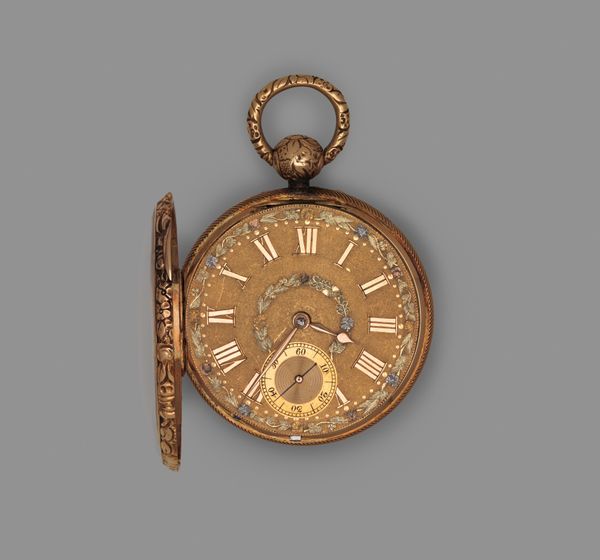
carving, metal, sculpture
#
carving
#
baroque
#
metal
#
sculpture
#
decorative-art
Dimensions: Overall: 1 1/2 × 7/8 in. (3.8 × 2.2 cm)
Copyright: Public Domain
Curator: This exquisitely crafted watch dates back to the early 17th century, somewhere between 1615 and 1635. It resides here at the Metropolitan Museum of Art, a remarkable example of Baroque decorative art. Editor: Right away, it strikes me as something that exists more to be adored than to tell the time. Look at all the delicate carving! What's it made from? Curator: Mostly metal— likely silver. The precision of the carving is remarkable. Remember, timepieces like this were luxury items. Think about who would commission or even be able to afford such an elaborate personal object in the 17th century. Editor: A noble, a countess perhaps? Imagine having that bobbing at your waist all day! I feel the weight of it, and the power… I'm getting an image of someone imperiously checking the time during a very dull political discussion! Curator: Exactly. Its purpose wasn't simply practical. This watch also broadcasts status. In its craftsmanship we can observe cultural ideals, power structures. This kind of decorative flourish shows just how central displaying wealth was in that period. Editor: You can tell too by the style...the dense, almost chaotic detailing of those floral decorations. Not simple, never minimal. More is more! Though I can’t help but think—time escapes us all, doesn’t it? No amount of ornamental excess will hold it back! Curator: Precisely. The watch acts as a potent memento mori as well as a signifier of rank. The passing of time remains, regardless of our position. And ultimately objects like these offer insight into those complicated connections, and the values we project onto the things that we use and cherish. Editor: Beautifully put. All that, ticking away in this tiny package! It certainly offers something more timeless than the hour.
Comments
No comments
Be the first to comment and join the conversation on the ultimate creative platform.
